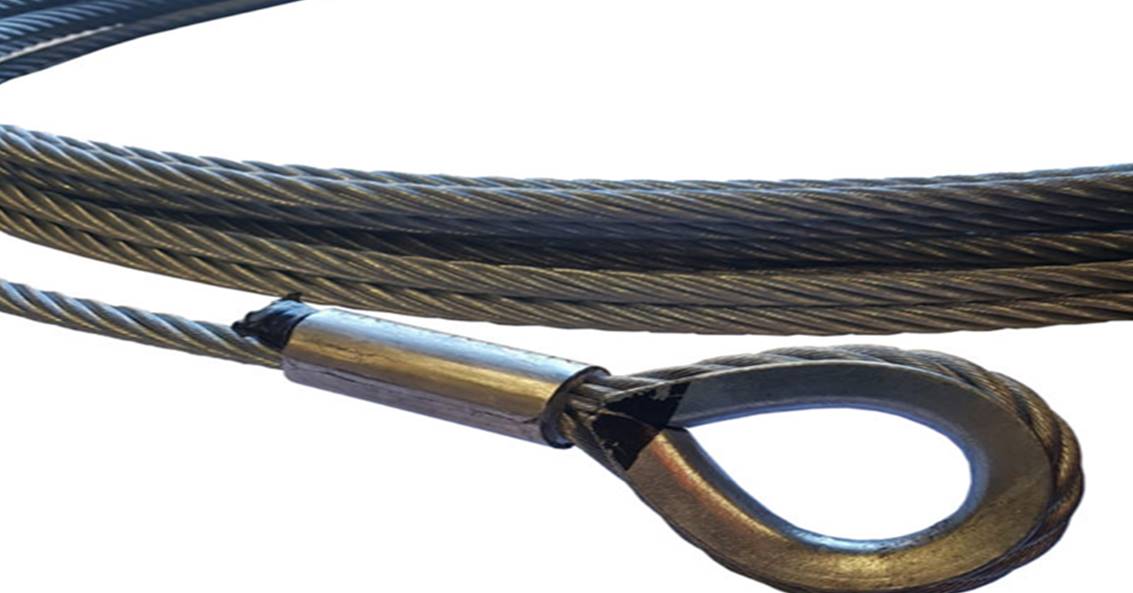The ancient Egyptians are known to be the first civilisation that created special tools to make rope. These ropes were made from water reed fibres. Rope making was also common in Britain during the medieval ages using handheld spindles. In the modern world, you have access to an array of different types of rope made from nylon, hemp and Polyester. Steel Wire Rope is also a good option that makes your rope work better. But the strongest out of all the types is wire rope. Today, we’ll be giving you a short guide on rope. Continue reading to find out how this type of hoisting equipment is made and what it’s used for.
What is Wire Rope and How is it Made?
Wire rope is a cable made with strands of metal that are twisted together to form a cord. These ropes are highly durable and typically made with non-corrosive materials. You can get wire rope in various thicknesses according to the number of strands used to make the cord.
There are three main components that make up a rope:
- Core: This is the centre of the cable
- Strands: Groups of wire that are wrapped around the core of the cable
- Wires: Single pieces of metal that are pinched to a small diameter and grouped to make the strands
Additionally, there is wire rope lay which has three features. The first feature is the direction in which the wires are wrapped around the cable’s core. This can either be left or right lay. Then there is the relationship between the strands and wire called lang lay or regular lay.
The last important feature of the lay is the distance strands travel while making a single revolution around a core.
Now let’s take a look at the build of the rope. The strands of the rope are formed in various patterns and these are called constructions. There are four types of construction:
- Single-layer
- Seale
- Filler wire
- Warrington
Each of these constructions has a unique arrangement and a different ratio of size between the inner and outer wires. Another aspect to remember when purchasing wire rope is its classification.
There are two numbers you’ll see when buying wire rope. The first number tells you how many strands there are in the rope. There’s a second number that indicates how many wires are in each strand. This second number identifies a class or range.
For example, if a rope is 6×19 there will be six strands but it may have between 15 and 25 wires in each strand.
What is Wire Rope Used for?
Since wire rope is strong and durable it’s used as part of the hoisting equipment for cranes and elevators. Additionally, rope is used to transmit power in mechanical machines. There’s wire rope that connects levers and pedals in aeroplanes too.
If you’re looking for rope Melbourne companies sell various classifications for your specific requirements. Whether you need wire rope connectors or cables for pulleys, you’ll find what you need from your local supplier.
4 Types of Wire Rope:
Now that you know how wire rope is made and what it’s used for it’s time to find out what the different types are. There are four types of wire rope and each one has a specific purpose. Let’s take a look at what these wire ropes can do.
1. Ultra Pac:
Ultra Pac wire rope is strong so it offers a higher breaking strength. This type of rope is designed to reduce internal friction so they will last longer. The Ultra Pac rope is ideal for machines that are used daily to carry heavy loads such as elevators.
2. Specialised Wire Ropes:
Special ropes have anti-spin and non-rotating properties which make it an excellent choice for lifting and carrying heavy loads. On the other hand, these types of ropes aren’t flexible so they may have limitations.
A specialised wire rope has six strands that wrap around the core of the cable in one direction. An additional layer of 12 strands runs in the opposite direction to the six strands. These Hanfseil ropes are made in various grades and sizes to meet your specific requirements.
3. Stainless Steel and Galvanised Cable:
A galvanised cable is coated in zinc so it’s a non-corrosive rope. Stainless steel rope has the same pulling strength as any wire rope but it’s much stronger because of the material it’s made from. It’s suitable for outdoor use and can withstand harsh weather conditions.
4. Tech-35:
A Tech-35 rope offers a higher rotation resistance, breaking strength and it’s flexible which makes it the ideal cable for swivel machinery.
Final Thoughts:-
Wire ropes have various breaking strengths and resistance for corrosion, abrasion and fatigue. You must pick the correct rope for your requirements. For example, if you’re working outside with the rope, you’ll need one that won’t rust.
Furthermore, if you’re going to be lifting heavy loads, you’ll need a thicker rope that has many strands and wires wrapped around the core of the cable. So which wire rope do you need? You’ll find what you’re looking for from your Melbourne supplier.
